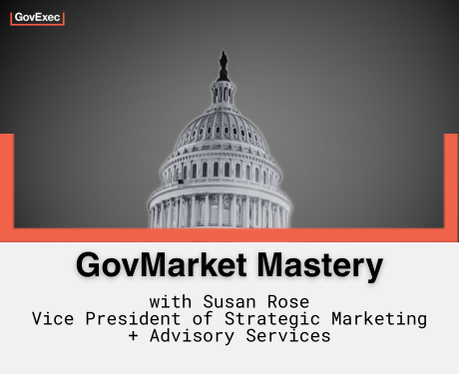January 20th seems like years ago, especially given the sweeping changes across the federal government. The administration has altered priorities, budgets, and leadership structures in ways that have already significantly impacted agencies. Both Program and IT departments are feeling the shifts, although not necessarily to the same degree.
GovExec Intelligence’s recent research, including a survey and focus groups with IT leaders, sheds light on how agency IT decision-makers are responding in real time.
From rising interest in AI to mounting pressure around efficiency and workforce reductions, the signals are clear: this isn’t business as usual.
These insights are essential for B2G marketers. To stay relevant and resonant in this changing environment, your messaging must reflect the reality that federal IT buyers face every day.
Below are five insights that can help guide your marketing strategy this quarter.
_____
1. AI Is Not Theoretical; It Is a Top Priority
Problem: Artificial Intelligence isn’t a “someday” anymore.
The administration priorities have made it a central consideration in IT projects. In fact, 72% of federal IT decision makers say AI is more important to their agency than it was just three months ago. That’s a seismic shift in a short amount of time.
But here’s the catch: AI is about results.
Focus group participants said their leaders expect AI to be integrated into everything they do, even if use cases are still evolving.
Marketing Pivot: Your AI messaging should focus less on the technology and more on the outcomes. Think enablement, not flash. How does your AI-powered solution improve decision-making, streamline operations, or enhance mission delivery?
Example: Swap “Our AI platform uses advanced algorithms” for “Our AI cuts data-processing time by 40%, freeing analysts to tackle mission-critical tasks.”
2. Efficiency Is the Buzzword No One Wants to Hear
Problem: While “efficiency” is the administration’s goal, the word itself is emotionally charged.
For nearly half of the survey respondents, efficiency means “accelerating the adoption of new and emerging technologies.” But 41% associate it with reducing costs while maintaining quality. In the focus groups, many defined it more bluntly: fewer staff, fewer resources.
In practice, some agencies, especially those on the civilian side, are already feeling the impact of staff reductions, with expectations of further reductions in force (RIFs). Programs are being paused as remaining employees take on more work.
Marketing Pivot: This climate demands empathy. Talk outcomes. Emphasize time savings, improved quality, or faster implementation without using the loaded term “efficiency.” And keep an eye on our RIF watch to stay informed.
Example: Lead with “Enable your team to respond 30% faster to security threats” rather than “Drive operational efficiency.”
3. IT Modernization Is Top of the List, But So Is Keeping the Lights On
Problem: Agencies must modernize and keep existing systems humming.
When asked what’s increased in importance over the past 90 days, IT decision makers cited a mix of forward-looking and defensive priorities:
- Data Protection: 69%
- Cybersecurity: 57%
- AI Tool Development and Adoption: 47%
- IT Modernization: 41%
This reflects a dual mandate: Agencies are pushing for innovation, but not at the expense of reliability or security.
Marketing Pivot: Your messaging should reflect that tension. If your solutions support both modernization and risk mitigation, that’s a strong selling point. Highlight integrations with legacy systems and built-in risk mitigation.
Example: Use a two-column callout graphic: “Modernize → Secure” to visually underscore your dual-mandate support.
4. Contractor Roles Are Expanding (and Scrutinized)
Problem: Workforce reductions are driving greater reliance on contractors, but with higher expectations.
With many agencies anticipating deeper staff cuts, there is a growing expectation that contractors will need to fill knowledge and capability gaps. But this isn’t a free pass for vendors; agency leaders also expect more from their partners.
Focus group participants noted that program managers and onsite contractor staff play a critical role right now. These individuals serve as executors, advocates, communicators, and sometimes the public face of the program.
Marketing Pivot: Think beyond the C-suite. How can your brand support and empower those frontline contractor roles? Develop contractor enablement strategies, including toolkits, training sessions, and playbooks, that empower frontline staff to effectively evangelize your solution within the agency.
Also worth noting: While recompetes may face more scrutiny, especially in the Department of Defense (DoD), there is not yet a widespread belief that “new players” will easily break into the market. It’s still about trust and proven value.
Example: Offer a ready-made “Contractor ROI Brief” that outlines key talking points for program managers.
5. Webinars Are In. Travel May Be Out.
Problem: Budget constraints and RIF concerns make travel tough.
With ongoing budget constraints and workforce disruptions, many agencies are limiting travel, and some employees are wary of being away from the office for extended periods. Webinars and virtual engagements are becoming increasingly attractive.
Marketing Pivot: Revisit your event strategy. Lean on your event partners for guidance. They have a pulse on what will entice people out of the office.
Prioritize 30-minute power webinars packed with peer insights, thought leadership, and real-world examples, not product pitches. Your audience may be stretched thin, so quick, value-packed sessions can go a long way.
Example: Co-host with a respected agency leader to boost credibility and attendance.
_____
Marketing to the federal government has always required context, but right now it demands even greater precision. Your buyers are navigating budget cuts, leadership shifts, and pressure to innovate. They’re looking for partners who understand their world, their needs, and also their constraints.
So, whether you’re promoting AI, modernization tools, or managed services, remember that the message should go beyond the technology. Enable federal teams to do more with less, without compromising on mission impact.
Now more than ever, it’s time to speak their language.


